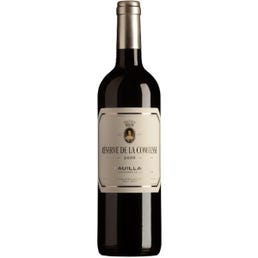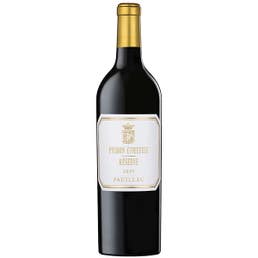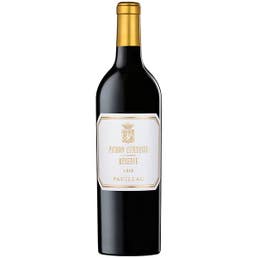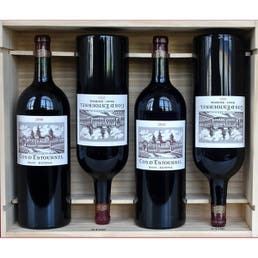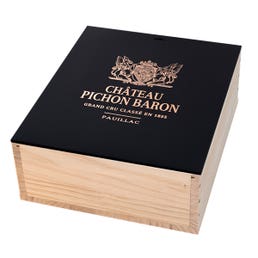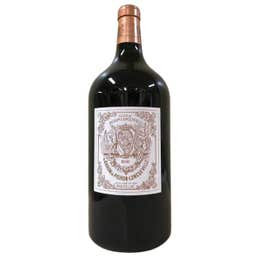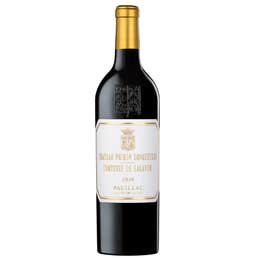Reserve de la Comtesse 2011
• Domaine: Château Pichon Longueville Comtesse de Lalande
• Appellation: Pauillac
• Classification: Second Wine, Second Growth, 2ème Grand Cru Classé
• Origin: Left Bank, Bordeaux, France
The story of Château Pichon Longueville Comtesse de Lalande is a story about feminine influence. The success of this illustrious Super Second is due to the contributions of powerful women who championed it throughout the ages. Laguna Cellar invites you to discover the fabulous second wine of this estate, Réserve de la Comtesse. This voluptuous wine is a powerhouse in its own right, and though it is a second wine is not to be underestimated.
The origins of the property date back to 1850 when Baron Joseph Pichon Longueville divided his large estate in two upon his death; his male heirs received Château Pichon Longueville au Baron and his daughters received Château Pichon Longueville Comtesse de Lalande. In the 18th Century, the property was run entirely by three women: Therese de Rauzan, Germaine de Laujus and Marie Branda de Terrefort. Though it stood adjacent to the First Growth Château Latour, the wines from Comtesse de Lalande carved out a distinct taste profile from the traditional Pauillac style. After a few years, Virgine, the wife of the Count de Lalande, took over management of the estate. She made many contributions including commissioning the popular architect Duphot to build a residence inspired by the Hotel de Lalande located in Bordeaux. Instead of passing down the estate to male heirs, the estate was passed from aunts to nieces. The female legacy was honored, and the estate remained in the hands of the same family for over 250 years.
In 1978, May-Eliane de Lencquesaing became the new owner and manager of Château Pichon Comtesse de Lalande. She was nicknamed, “Le Générale,” partially because of her husband’s military background and partially because she was a force to be reckoned with. In addition to increasing the size of the property from its original 40 hectares to 89 hectares, she traveled the globe and was a fierce champion of the Bordeaux region. Under her management, quality of the wines skyrocketed, and they earned international recognition and critical acclaim. Eventually, May-Eliane de Lencquesaing sold the estate to Champagne Roderer in 2007. Roderer hired Sylvie Cazes to oversee the property. The estate was promptly renovated and modernized, with a targeted replanting program and a triple tiered gravity-controlled cellar that cost upward of 15 million Euro. This allowed the winemaking team to create softer, more supple wines at the Pauillac estate.
Réserve de la Comtesse was created and sold for the first time in 1973. The vines benefit from the same know-how as the grand vin and the end result is a more accessible, user friendly version of the wine. Réserve de la Comtesse is usually made with a mixture of Cabernet Sauvignon, Merlot, Cabernet Franc and Petit Verdot that grow on the same plots as the vines used for the grand vin. With both holdings in Pauillac and Saint-Julien, these 100% organically farmed wines require a bit of time to unfold, though one can enjoy this offering a bit sooner than the more powerful and richly concentrated grand vin.
Tasting Notes
"Made from a blend of 53% Cabernet Sauvignon, 38% Merlot and the rest Cabernet Franc, the second wine, the 2009 Reserve de la Comtesse, exhibits notes of forest floor, white chocolate, licorice, black currants and vanillin-infused black cherries. It possesses a sweet, round, generous style given its high glycerin. Both the Reserve de la Comtesse and Pichon Lalande have about 13% alcohol, slightly lower than most Pauillacs achieved in 2009. Drink it over the next 10 years." - Robert Parker Jr., The Wine Advocate (12/22/2011, Issue 199), Ratings: 91, Drink: 2012-2022
| LWIN | 1014639 |
|---|---|
| Stock Status | Out of Stock |
| Appellation | Pauillac |
| Vintage | 2011 |
| Brand | Château Pichon Lalande |
| Shipping Weight | 3.000000 |




